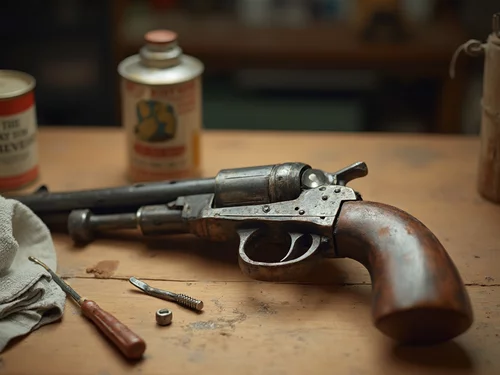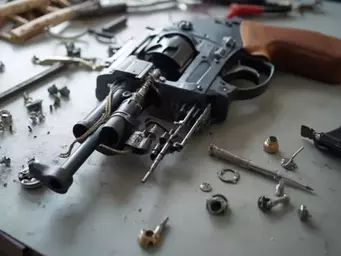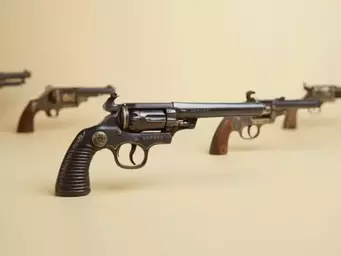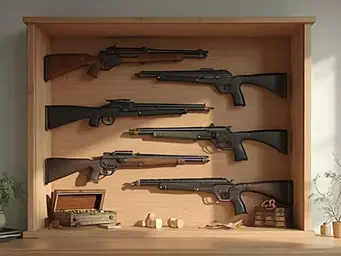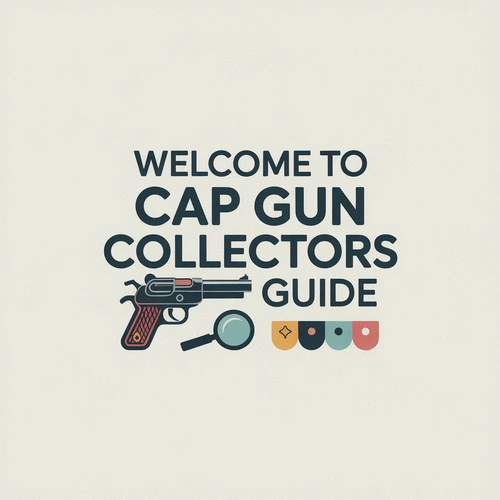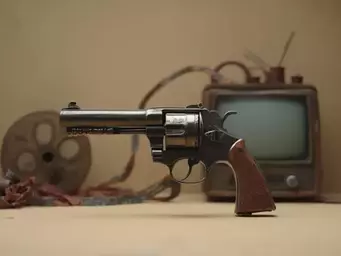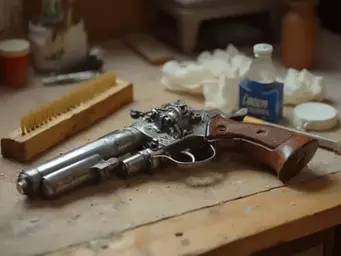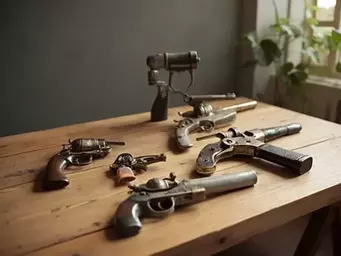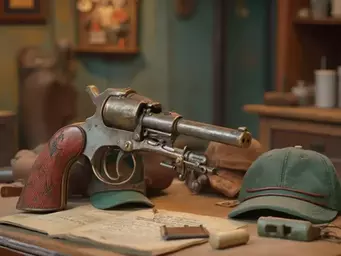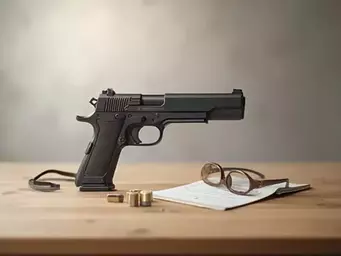Have you ever pondered the untold stories behind childhood treasures? Vintage cap guns are not merely toys; they embody a rich history of craftsmanship and nostalgia that connects generations. Restoring these pieces is a labor of love that allows enthusiasts to preserve memories while celebrating the artistry of toy design.
What You Will Learn
- The significance of vintage cap guns as cultural artifacts reflecting childhood nostalgia and craftsmanship.
- Key factors that influence the collectibility and value of cap guns, including condition, rarity, and brand reputation.
- Essential tools and materials necessary for a successful cap gun restoration, ensuring both aesthetics and integrity.
- The evolution of cap guns and how historical context impacts restoration and value assessment for collectors.
Cap Gun Restoration: Essential Tools & Materials for Collectors
Delve into the key categories of tools and materials vital for bringing vintage cap guns back to life, whether for basic maintenance or detailed restoration.
Basic Restoration Tools
- Microfiber cloths
- Precision screwdrivers
- Strong adhesive (glue)
- Paintbrushes
- Scrapers (plastic/metal)
Key Restoration Materials
- Enamel spray paint
- Plastic primer
- Epoxy filler
- Protective coatings
Specialized Restoration Tools
- Ultrasonic cleaner
- Dremel tool
- Magnifying glass
Restoration Best Practices
- Handle fragile items gently
- Test materials in small areas
- Research original finishes
- Preserve historical accuracy
Understanding the Art of Restoring Vintage Cap Guns
Restoring vintage cap guns is more than just a hobby; it’s a way to preserve history and celebrate craftsmanship. For collectors and enthusiasts alike, these classic toys hold a special place in our hearts. Each piece tells a story, evoking nostalgia and a sense of connection to a simpler time when imagination was king. As a passionate collector, I've seen firsthand how restoration can breathe new life into these cherished items.
Whether you’re a seasoned collector or just starting your journey, understanding the significance of these toys can deepen your appreciation. Vintage cap guns represent not only a fun pastime but also a fascinating glimpse into the evolution of toy design and manufacturing.
Why Vintage Cap Guns Matter to Collectors and Enthusiasts
For many of us, vintage cap guns symbolize childhood memories and a love for play. These toys are not just relics; they are artifacts that reflect cultural trends and technological advancements through the years. Collectors often seek them out for various reasons:
- Nostalgia: These toys remind us of our youth and the games we played.
- Craftsmanship: Vintage cap guns display intricate designs and quality that are hard to find in modern replicas.
- Community: Collecting connects us with fellow enthusiasts who share our passion.
Restoring these items allows us to honor their legacy and ensure that future generations can enjoy them too. When we engage in restoration, we’re not just fixing toys; we’re preserving history. For more insights on preserving historical artifacts, you can refer to resources like the National Archives' preservation guidelines.
The Historical Context of Cap Guns: A Glimpse into Their Evolution
The journey of cap guns starts in the mid-20th century when these toys became immensely popular among children. Initially made from metal, they were designed for durability and realistic play. Over the decades, the materials shifted with trends, incorporating plastic and colorful accents.
These changes not only reflect the advancements in manufacturing but also the shifting tastes of consumers. Understanding this historical backdrop is crucial for collectors, as it can influence the value and care required for restoration. The evolution of cap guns showcases how toy design has adapted over the years. Further reading on the history of toys can be found through institutions like The Strong National Museum of Play.
Exploring the Value: What Makes Vintage Cap Guns Collectible?
When assessing the value of vintage cap guns, several factors come into play. Collectors often look for:
- Condition: The better the condition, the higher the potential value.
- Rarity: Limited-edition models or those produced in smaller quantities are typically more sought after.
- Brand: Certain manufacturers have a more substantial reputation, which can affect desirability.
Understanding these factors will not only help you make informed purchases but also guide your restoration process, ensuring that you protect and enhance the value of your collection. For general guidance on valuing collectibles, resources from organizations like the American Society of Appraisers can be beneficial.
The Role of Cap Gun Brands in Value Assessment
The brand of a cap gun can significantly impact its value in the collectors' market. Iconic manufacturers like Mattel and Daisy have produced some of the most sought-after models. As a collector, I’ve noticed that certain brands often come with their own set of avid followers, increasing demand for specific models.
- Mattel: Known for their innovative designs, often featuring unique characters.
- Daisy: Famous for their realistic mechanics and durable construction.
- Hubley: Recognized for the classic designs that collectors adore.
When restoring cap guns, knowing the brand can help you choose the right materials and techniques, ensuring that the restoration remains true to the original craftsmanship. Always remember to consider the brand as you delve into restoration, as it shapes the overall narrative of your collection.
Interactive Poll: Your Thoughts on Restoration
As you consider restoring vintage cap guns, we want to hear from you! What aspect of restoration excites you the most?
Essential Tools and Materials for Cap Gun Restoration
Restoring vintage cap guns can be a rewarding journey, but having the right tools and materials is crucial for a successful outcome. Whether you're a seasoned collector or just starting out, knowing what to gather will make the process smoother and more enjoyable. Let’s dive into the essentials!
Gathering the Right Tools: What You Need for a Successful Restoration
Before you get started, it's important to gather a comprehensive toolkit that will aid your restoration process. Here's a list of tools every cap gun restoration enthusiast should have:
- Microfiber cloths: Perfect for cleaning and polishing without scratching the surface.
- Screwdrivers: A set of precision screwdrivers to handle various screw sizes.
- Glue: Strong adhesive for reattaching broken parts.
- Paintbrushes: For detailed painting and touch-ups.
- Plastic and metal scrapers: To remove any old paint or rust without damaging the toy.
With these tools, you can tackle a wide range of restoration tasks, from cleaning to repairs. Just remember to handle everything gently, especially if the cap gun is particularly vintage or fragile!
Choosing Materials: Paints, Primers, and Fillers for Cap Gun Repairs
Once you have your tools ready, the next step is to select the right materials. Choosing quality paints and fillers is vital for achieving a great finish. Here are some recommendations:
- Enamel spray paint: Ideal for a smooth finish and durability.
- Plastic primer: Ensures paint adheres well to plastic parts.
- Epoxy filler: Perfect for repairing cracks or holes in the metal frame.
Using the right materials not only enhances the aesthetics but also preserves the integrity of your vintage cap gun. Always test any materials on a small area first to avoid unwanted surprises!
Essential Restoration Tools for Cap Gun Enthusiasts
In addition to basic tools, consider investing in some specialized restoration tools that can elevate your project. These tools can save time and improve the quality of your work:
- Ultrasonic cleaner: Effectively removes dirt and grime from intricate parts.
- Dremel tool: Useful for sanding down rough edges or intricate detailing.
- Magnifying glass: Helps in examining tiny parts during repairs.
Having these tools at your disposal will not only streamline your restoration process but can also be a lot of fun to use. You'll find yourself immersed in the details, discovering nuances that make each cap gun unique!
Frequently Asked Questions About Vintage Cap Gun Restoration
Here are some common questions about restoring vintage cap guns:
- Q: Why are vintage cap guns considered cultural artifacts?
A: Vintage cap guns are cultural artifacts because they reflect the craftsmanship, design trends, and childhood nostalgia of past generations, offering a glimpse into historical play and manufacturing. - Q: What factors determine the collectibility and value of a vintage cap gun?
A: Key factors include the cap gun's condition, its rarity (e.g., limited editions), and the reputation of its brand (e.g., Mattel, Daisy, Hubley). - Q: What are the essential basic tools needed for cap gun restoration?
A: Essential basic tools include microfiber cloths, precision screwdrivers, strong adhesive, paintbrushes, and plastic/metal scrapers. - Q: What materials are recommended for painting and repairing vintage cap guns?
A: Recommended materials include enamel spray paint for a smooth finish, plastic primer for adherence, and epoxy filler for repairing cracks or holes. - Q: How does historical context influence the restoration process?
A: Understanding the historical context, such as the materials used and design evolution, helps collectors choose appropriate restoration techniques and materials to maintain the authenticity and value of the cap gun.
Recap of Key Points
Here is a quick recap of the important points discussed in the article:
- Significance of Vintage Cap Guns: These toys are not only nostalgic but also showcase craftsmanship and cultural history.
- Factors Affecting Value: Condition, rarity, and brand play critical roles in determining the collectible value of cap guns.
- Essential Tools for Restoration: A well-equipped toolkit including microfiber cloths, screwdrivers, and adhesives is vital for effective restoration.
- Choosing the Right Materials: Quality paints, primers, and fillers are crucial for a successful restoration that maintains the integrity of the toy.
- Community Engagement: Connecting with fellow enthusiasts can provide valuable insights and support in your collecting journey.

